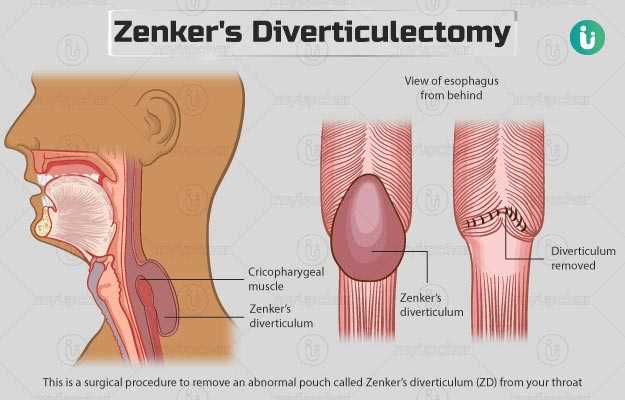Summary
Zenker’s diverticulectomy is a surgical procedure to remove Zenker’s diverticulum, an abnormal pouch that develops in a weak area called Killian’s triangle present between the throat and the oesophagus. Killian's triangle does not have any muscle in its wall. When food in the throat is pushed against this weak spot over and again, an abnormal pouch (Zenker's diverticulum/ZD) is formed at this place eventually. When you swallow food, it tends to get stuck in this pouch, resulting in symptoms such as regurgitation of the ingested food and coughing.
Zenker's diverticulectomy is performed with general anaesthesia, you will be put into sleep during the surgery. It can be done by an open or endoscopic method. Open surgery involves making a cut on the neck, whereas endoscopic surgery requires inserting a flexible tube fitted with a camera in the throat through the mouth. The latter offers various benefits over open surgery such as a shorter recovery period, shorter hospital stay, no external incision, and reduced postoperative pain.






































